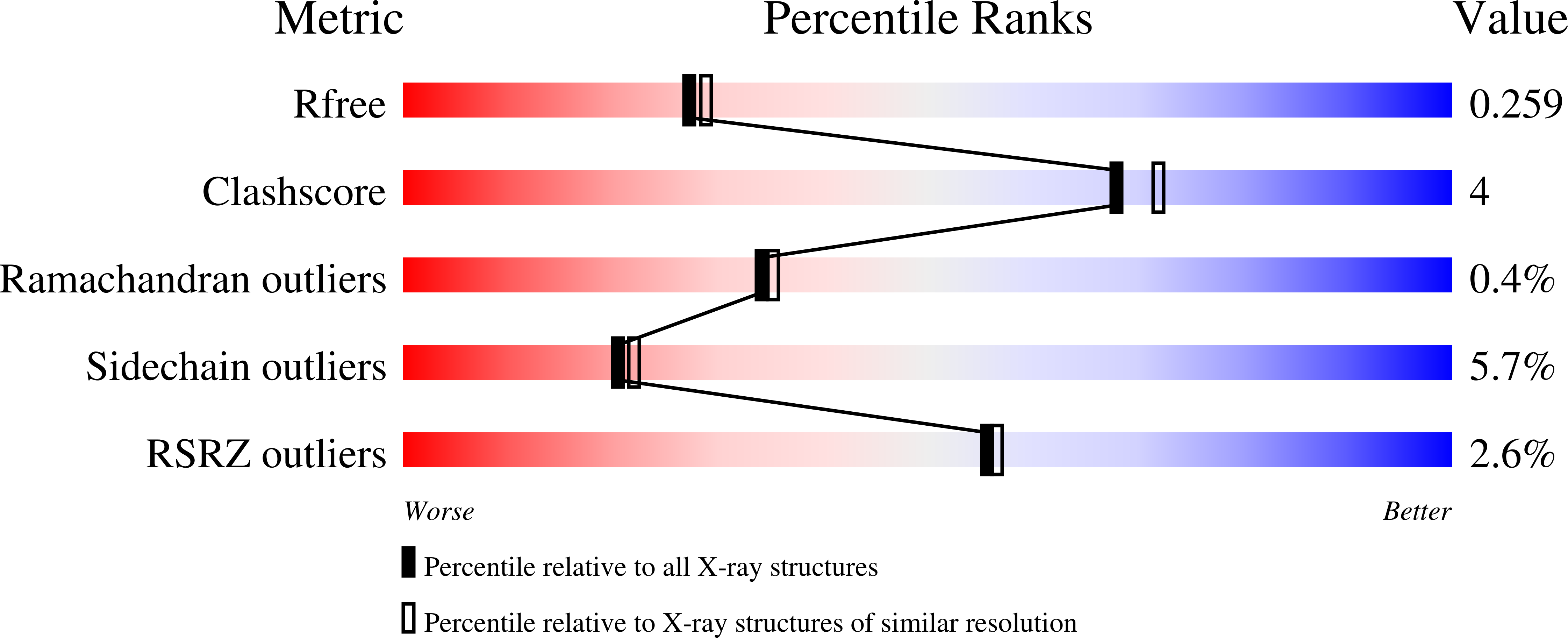Crystal structure of norwalk virus polymerase reveals the carboxyl terminus in the active site cleft.
Ng, K.K., Pendas-Franco, N., Rojo, J., Boga, J.A., Machin, A., Alonso, J.M., Parra, F.(2004) J Biol Chem 279: 16638-16645
- PubMed: 14764591
- DOI: https://doi.org/10.1074/jbc.M400584200
- Primary Citation of Related Structures:
1SH0, 1SH2, 1SH3 - PubMed Abstract:
Norwalk virus is a major cause of acute gastroenteritis for which effective treatments are sorely lacking. To provide a basis for the rational design of novel antiviral agents, the main replication enzyme in Norwalk virus, the virally encoded RNA-dependent RNA polymerase (RdRP), has been expressed in an enzymatically active form, and its structure has been crystallographically determined both in the presence and absence of divalent metal cations. Although the overall fold of the enzyme is similar to that seen previously in the RdRP from rabbit hemorrhagic disease virus, the carboxyl terminus, surprisingly, is located in the active site cleft in five independent copies of the protein in three distinct crystal forms. The location of this carboxyl-terminal segment appears to interfere with the binding of double-stranded RNA in the active site cleft and may play a role in the initiation of RNA synthesis or mediate interactions with accessory replication proteins.
Organizational Affiliation:
Division of Biochemistry, Department of Biological Sciences, University of Calgary, Calgary, Alberta T2N 1N4, Canada. [email protected]














